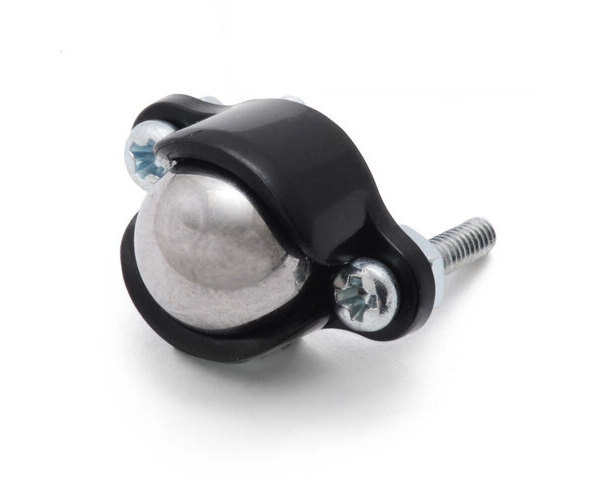

This is a merged information page for Item #951.
View normal product page.
Pololu item #:
951
Brand:
Pololu
Status:
Active and Preferred

This small ball caster uses a 3/8″ diameter metal ball. The height of the assembled kit ranges from 0.4″ to 0.6″, depending on the combination of included spacers used.
Alternatives available with variations in these parameter(s): ball diameter ball material Select variant…
 Compare all products in Pololu Ball Casters.
Compare all products in Pololu Ball Casters.
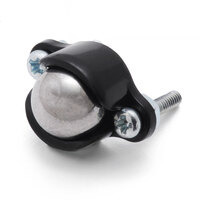 |
Pololu ball caster with 3/8" metal ball. |
|---|
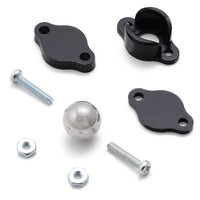 |
Pololu ball caster with 3/8" metal ball with included hardware. |
|---|
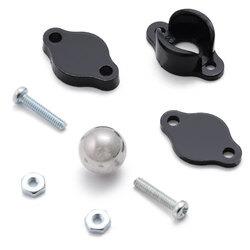 |
Pololu ball caster with 3/8" metal ball with included hardware. |
|---|
This ball caster kit includes a black ABS housing, a 3/8″ diameter metal ball, two spacers (1/16″ and 1/8″ thick), and two 7/16″ #2 screws and nuts. The total height of the ball caster, 0.4″, can be increased to about 0.6″ using the included spacers. The two included #2 screws can be used to mount the ball caster to your chassis, or you can use your own #2 or M2 screws if your application requires a different length.
Note that our ball casters are designed for small robots; they are not intended to bear more than a few pounds. With more weight than this, friction between the ball and the housing will generally keep it from rolling well.
For detailed dimensions, see the dimension diagram (164k pdf).
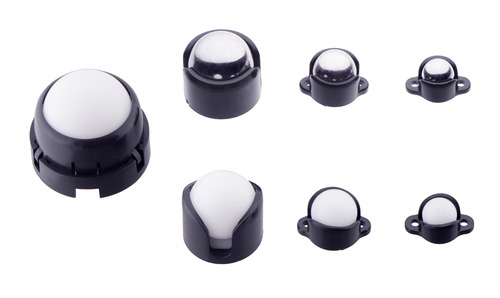 |
Pololu ball casters with plastic and metal balls. Ball diameter from left to right: 1″, 3/4″, 1/2″, and 3/8″. |
|---|
Pololu ball caster ball diameter |
height with no spacers |
distance between screw holes |
weight with no spacers or screws |
| 0.40″ | 0.53″ | 0.03 oz | |
| 0.40″ | 0.53″ | 0.14 oz | |
| 0.53″ | 0.58″ | 0.07 oz | |
| 0.53″ | 0.58″ | 0.32 oz | |
| 0.88″ | 0.24″ | 0.25 oz | |
| 0.82″ | 0.61″ | 1.05 oz | |
| 1.10″ | 0.48″ | 0.65 oz | |
| 1.10″ | 0.48″ | 0.58 oz | |
| 1.10″ | 0.70″ | 0.36 oz |
Several Pololu employees made robots for the LVBots dead reckoning competition. Unfortunately, my robot didn’t work enough in time for the...
This excellent guide from C.I.r.E. (Club de Informática, robótica y Electrónica) shows in detail how to build a fast (> 2 m/s) line-following...